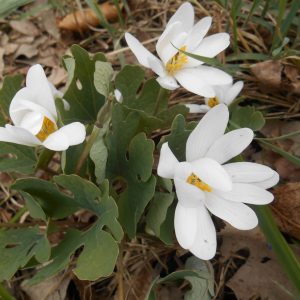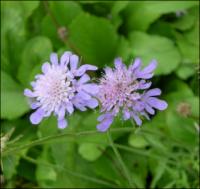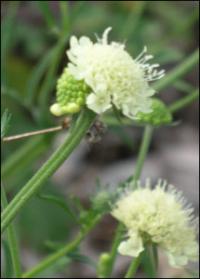Plants for Butterflies and Other Pollinators
Showing 169–176 of 223 results
-
Sambucus canadensis syn. Sambucus nigra var. canadensis. Elderberry, American elderberry Z 3-9
In late spring to mid-summer lavish, fragrant flat-to dome-shaped clusters of flowers bloom above this arching, multi-stemmed shrub. Late summer into fall the multitude of flowers turn into purple-black, edible fruits, up to 2000 per cluster!
In late spring to mid-summer lavish, fragrant flat-to dome-shaped clusters of flowers bloom above this arching, multi-stemmed shrub. Late summer into fall the multitude of flowers turn into purple-black, edible fruits, up to 2000 per cluster!
Size: 5-12’ x spreading quickly by suckers. Best to grow as hedge, along a roadside, fence-line or forest edge.
Care: sun to part shade in moist to well-drained soil
Native: Americas east of Rocky Mountains south to Bolivia. Wisconsin native
Wildlife Value: branches and leaves make nesting sites and give cover for birds.. Many birds (including, Pheasant, Bluebird, Cedar waxwing, Cardinal, Mockingbird and others) as well as some mammals eat the sweet, but slightly bitter, fruit. It is a source of pollen for numerous bees and other insects.Collected before 1735. Native Americans made extensive use of this, Cherokee used it topically for boils, burns and infections and internally for rheumatism, fevers, dropsy, as a diuretic, and of course ate the berries. Costanoan made its hollow twigs into pipes, flutes and shafts for arrows. Several Natives infused the flowers and foliage with hot water to make steam baths. And many natives ate it, boiled it, jammed it, and added the fruit to cakes. Today people eat them in jellies, jams, pancakes, pies and wine and make homeopathic medicine from it. Reportedly ripe berries are high in vitamin C and fiber. It’s also an antioxidant.
**LISTED AS OUT OF STOCK BECAUSE WE DO NOT SHIP THIS ITEM. IT IS AVAILABLE FOR PURCHASE AT OUR RETAIL LOCATION.
-
Sanguinaria canadensis Bloodroot, Indian paint, Red Puccoon Z 3-9
Very showy, swan-white anemone-like blooms in spring from the center of glaucus, grey-green, lobed, puckered, rolled leaves. Both the leaves and root contain a red liquid. Ephemeral, dies back in summer.
Available for purchase in Spring only
Very showy, swan-white anemone-like blooms in spring from the center of glaucus, grey-green, lobed, puckered, rolled leaves. Both the leaves and root contain a red liquid. (Bloodroot) Ephemeral, dies back in summer.
Size: 6” x 12”
Care: part shade to shade in moist well-drained soil
Native: Nova Scotia to Manitoba, south to Florida and Arkansas, Wisconsin native
Wildlife Value: deer resistant. Pollen, but no nectar, makes this attractive to many different bees. Ants distribute the seeds.Sanguinaria is Latin meaning “blood,” so named for the red color of the sap. For Natives red sap used to make dye for skin, clothing, weapons and baskets. Used to induce abortions, as well as an aphrodisiac and cure sexually transmitted diseases. The root rubbed on the palm of the hand was a love charm for Ponca men. Iroquois prescribed it for diarrhea and constipation, to draw out slivers, hiccups, and generally as a panacea. It was administered to those who saw a corpse. Sioux used a weak solution to cure fever, rheumatism, congestion, and skin cancer, Ojibwa made dried roots into a necklace to prevent bleeding. 1st collected by Rev. John Banister in colonial Virginia c. 1678. According to John Bartram this was “…(C)alled by the Country People, Red Root, or Tumerick The Root dried and powdered is recommenced by Dr. Colden, as a Cure for jaundice, the Powder has been given to the Weight of a Drachm in Small Beer; and by others, for the Bite of a Rattle Snake.” Grown at Shadwell, Jefferson’s birthplace and home until it burned in 1770. Grown at America’s 1st botanic garden, Elgin Botanic Garden 1811, located where Rockefeller Center now stands. Pressed specimen in Emily Dickinson’s herbarium.
-
Sanguisorba hakusanensis Korean burnet, Lilac squirrel Z 4 – 9
In mid to late summer bushy purplish-pink tails (like a Barbie doll squirrel tail) nod gracefully downward atop erect stems emerged from a clumping base that sprouts sage-colored, scalloped leaves.
OUT OF STOCK
In mid to late summer bushy purplish-pink tails (like a Barbie doll squirrel tail) nod gracefully downward atop erect stems emerged from a clumping base that sprouts sage-colored, scalloped leaves.
Size: 12-18”x12”
Care: sun to part shade in moist to moist well-drained soil
Native: Korea and JapanSanguisorba is Latin meaning to soak up blood, for the plant’s reputed ability to clot blood. Hakusanensis means coming from Haku, a mountain in Japan where this grows. Described in Botanical Magazine (Tokyo) in 1907.
-
Sanguisorba obtusa Japanese burnet Z 4-9
A confection - neon Barbie-doll pink dangling bottle-brush spikes
OUT OF STOCK
A confection – neon Barbie-doll pink dangling bottle-brush spikes- spectacular- July – September
Size: 2-3’ x 2’
Care: moist to moist well-drained soil in sun
Native: Honschu Japan
Wildlife Value: attracts bees and butterfliesSanguisorba is Latin meaning “to soak up blood”, for the plant’s reputed ability to clot blood. This species collected before 1873.
-
Sanguisorba parviflora syn S tenuifolia var. parviflora, S. tenuifolia var. alba White Japanese burnet Z 4-8
Drooping white spikes (I know, drooping and spike are an oxymoron but you get the idea) atop tall stems and above narrow, dissected foliage. Blooming in July into October.
Drooping white spikes (I know, drooping and spike are an oxymoron but you get the idea) atop tall stems and above narrow, dissected foliage. Blooming in July into October.
Size: 3-5' x 18"
Care: Sun to part shade in moist well-drained soil
Native: Japan, Korea, Mongolia & Russia
Wildlife Value: attracts bees and butterfliesCollected by 1874. (Maxim.)
-
Scabiosa lucida Pincushion flower Z 4-9
Lilac pincushions all summer & fall
Lilac pincushions all summer & fall, non-stop
Size: 24" x 12"
Care: full sun in well-drained soil.
Native: Central and Eastern Europe
Wildlife Value: attracts butterfliesScabiosa from Latin scabies referring to the itch caused by a mite infestation, which another Scabiosa species allegedly cured. This species 1st described in a French publication in 1779.
-
Scabiosa ochroleuca Cream pincushion Z 4-9
June-October ivory pincushions atop wiry stems
Looking for a non-stop bloomer? June-October ivory pincushions atop wiry stems
Size: 18"-24" x 18"
Care: sun to part shade in moist well-drained soil. Drought tolerant.
Native: Europe & Asia
Wildlife Value: attracts butterfliesThe name scabiosa from Latin scabies refers to the mite infestation that this plant was supposed to cure; ochroleuca means “yellowish white.” First described by Bauhin Caspar in Pinax theatri botanici in 1623.
-
Schizachyrium scoparium syn. Andropogon scoparium Little bluestem Z 3-9
Wispy, feather-like seedheads atop blue-grey foliage that turns plum-orange-red in fall.
Wispy, feather-like seedheads atop blue-grey foliage that turns plum-orange-red in fall
Size: 18" x 12"
Care: sun in well-drained soil.
Native: all No. America
Wildlife Value: leaves food for Skipper butterfly caterpillars and seeds food for songbirdsFirst collected by French plant hunter André Michaux in America’s prairies c. 1790. Comanche used it to remedy syphilitic sores. Lakota made soft, wispy seedheads into liners for moccasins.






